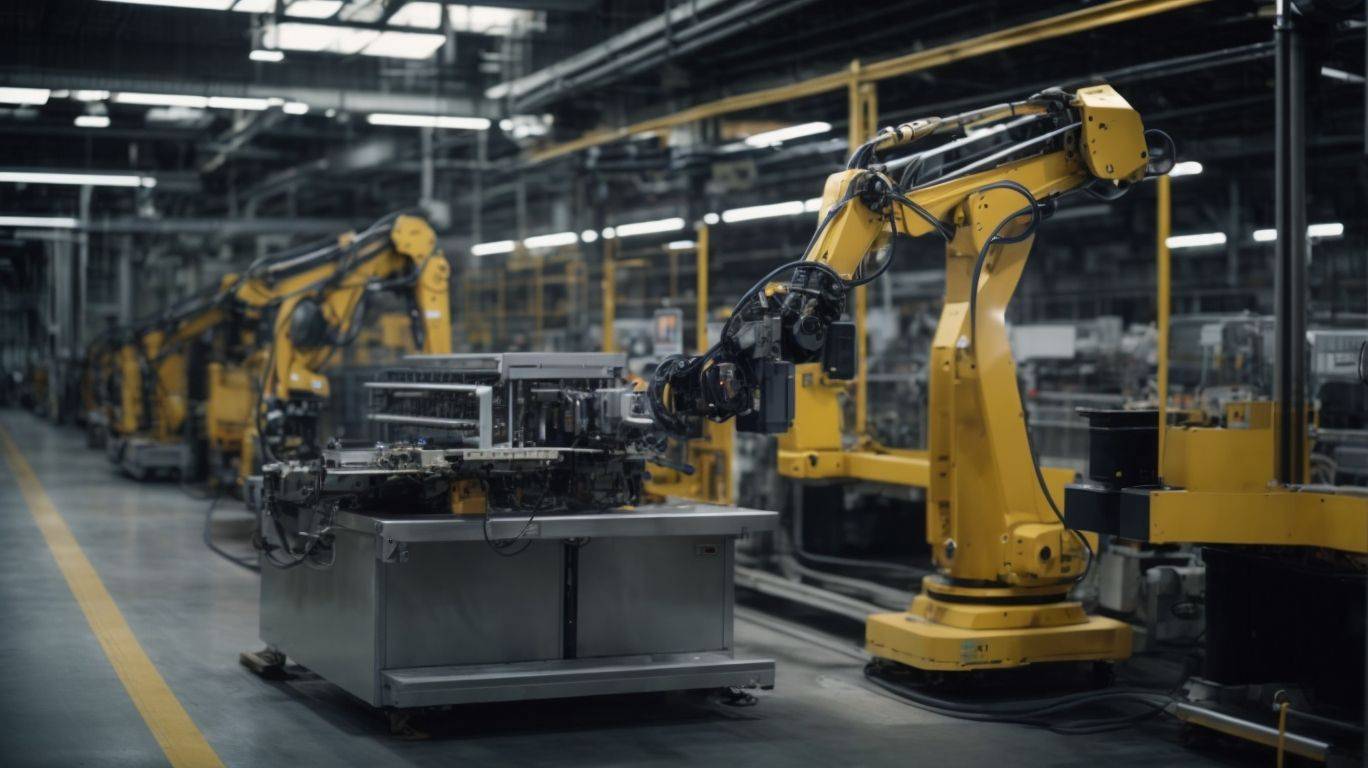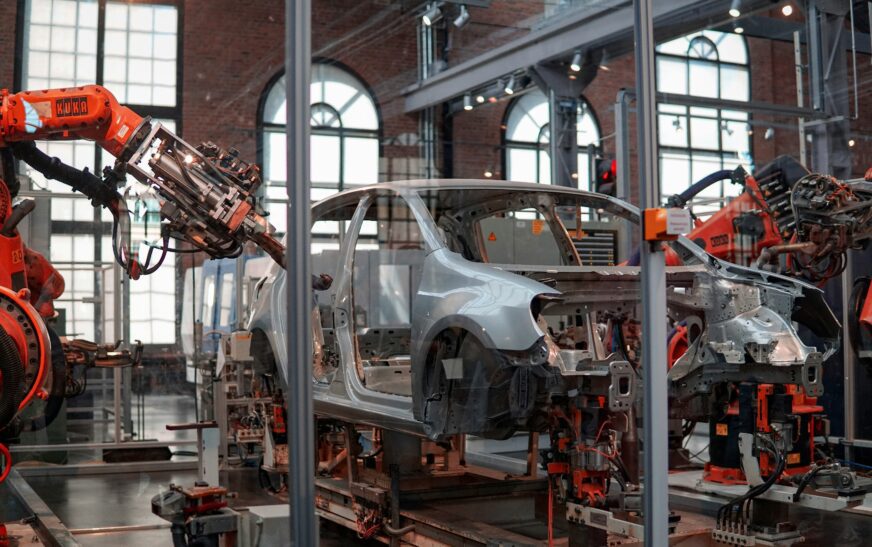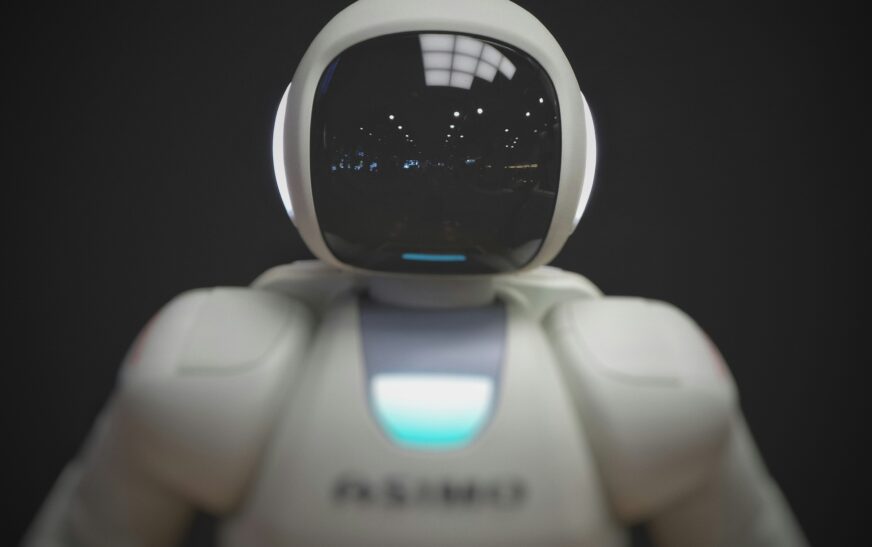Introduction to Robotics in Manufacturing

The manufacturing landscape is undergoing a seismic shift, driven by the incredible advancements in robotics. Gone are the days when factories were bustling with human workers completing repetitive tasks. Today, intelligent machines take center stage, transforming production lines into hubs of efficiency and precision. As industries strive to meet growing consumer demands while maintaining quality and lowering costs, robotics has emerged as a game-changer. From enhancing productivity to ensuring safety, the impact of these robotic systems cannot be overstated. Join us as we explore how robotics is revolutionizing manufacturing and paving the way for an innovative future.
Advantages of Using Robotics in Manufacturing
Robotics in manufacturing brings numerous advantages that can transform processes. First and foremost, robots enhance efficiency. They can operate around the clock without fatigue, significantly increasing productivity.
Consistency is another key benefit. Unlike humans, robots perform tasks with precision every time. This reduces errors and ensures quality control throughout production lines.
Safety also improves when robotics are employed. Dangerous tasks can be assigned to machines, minimizing workplace injuries and protecting human workers from hazardous environments.
Additionally, robotics enable greater flexibility in manufacturing operations. With advancements in AI and machine learning, robots can adapt to new tasks with minimal downtime or reconfiguration.
Cost savings emerge as well over time. While initial investments may seem high, reduced labor costs and increased output often lead to a swift return on investment for businesses willing to embrace this technology.
Types of Robots Used in Manufacturing

Manufacturing employs various types of robots, each designed for specific tasks. Articulated robots are among the most common. They feature joints that allow them to move in multiple directions, making them suitable for tasks like welding and assembly.
Then there are SCARA robots, known for their speed and precision. These horizontal arms excel at pick-and-place operations and can streamline packaging processes efficiently.
Collaborative robots, or cobots, work alongside humans safely. They enhance productivity by handling repetitive tasks while allowing workers to focus on more complex activities.
Another type is delta robots, which have a unique design resembling a spider’s legs. Their rapid movement makes them ideal for high-speed picking applications in food processing or electronics manufacturing.
Each type of robot contributes uniquely to improving efficiency, reducing errors, and boosting production capabilities across the industry.
Case Studies of Successful Implementation of Robotics in Manufacturing
One remarkable case study comes from Ford, where robotics transformed their assembly lines. The introduction of collaborative robots, or cobots, allowed human workers to partner with machines seamlessly. This led to increased efficiency while maintaining a focus on safety.
Another interesting example is Siemens, which implemented robotic systems in its electronic manufacturing facilities. These robots handle delicate tasks like placing components on circuit boards. Their precision and speed have drastically reduced production time.
In the food industry, companies like Tyson Foods adopted robotics for packaging and processing meat products. This innovation not only improved hygiene but also enabled faster turnaround times.
These examples highlight how various sectors leverage robotics to enhance productivity and quality control in manufacturing processes. Each implementation showcases unique benefits tailored to specific challenges within the industry.
Future Applications and Potential Impact on the Industry
The future of robotics in manufacturing is brimming with possibilities. As technology evolves, robots are expected to become even smarter and more capable.
Imagine factories where autonomous robots collaborate seamlessly alongside human workers. Enhanced AI will allow these machines to adapt quickly to changes on the production line. This flexibility could lead to a significant reduction in downtime.
Another exciting prospect is the rise of predictive maintenance. Robots equipped with sensors can analyze equipment health in real-time, predicting failures before they occur. This proactive approach minimizes disruptions and extends machinery life.
Moreover, advancements in materials science could enable lighter, stronger robots that perform intricate tasks with precision. The integration of robotics into supply chains promises streamlined processes and faster delivery times.
As industries embrace these innovations, we may witness unprecedented efficiency levels and economic growth across sectors. The potential impact on job roles will also be profound as new skills emerge alongside robotic capabilities.
Challenges and Limitations of Robotics in Manufacturing
While robotics brings numerous advantages to manufacturing, it’s not without its challenges.
One major hurdle is the initial investment. Advanced robots can be expensive, and many small to medium-sized businesses struggle to justify the costs. This financial barrier limits widespread adoption.
Another issue lies in integration with existing systems. Many factories still rely on outdated machinery that doesn’t easily mesh with modern robotic solutions. Bridging this gap requires careful planning and additional resources.
Skill gaps also pose a problem; as technology evolves, so does the need for specialized training. Workers must adapt to new roles that involve overseeing or maintaining robotic systems.
There are concerns about job displacement. While robots enhance efficiency, they can also replace human labor in certain tasks, leading to workforce anxieties within communities reliant on those jobs.
These challenges highlight the complexity of fully embracing robotics in manufacturing settings.
Conclusion: Embracing the Revolution
The world of manufacturing is undergoing a significant transformation, driven by advancements in robotics. As industries embrace these technologies, the benefits become increasingly clear. Increased efficiency, improved precision, and enhanced safety are just the beginning.
Companies that have successfully integrated robotics into their operations showcase palpable results. Higher production rates and reduced operational costs illustrate what’s possible when businesses leverage these tools effectively. The success stories inspire others to consider similar paths.
Looking ahead, the potential applications for robotics are virtually limitless. From smart factories to collaborative robots working alongside human workers, innovation will continue to shape how products are made and delivered.
However, challenges remain on this journey towards full integration of robotics in manufacturing. Issues such as workforce displacement and high initial investment can deter companies from making changes. Addressing these concerns thoughtfully will be crucial for long-term success.
As we stand at this pivotal juncture in manufacturing history, embracing robotics isn’t just an option—it’s becoming essential for survival and growth in a competitive landscape. Adapting to change now sets the stage for what comes next in this fascinating revolution.











